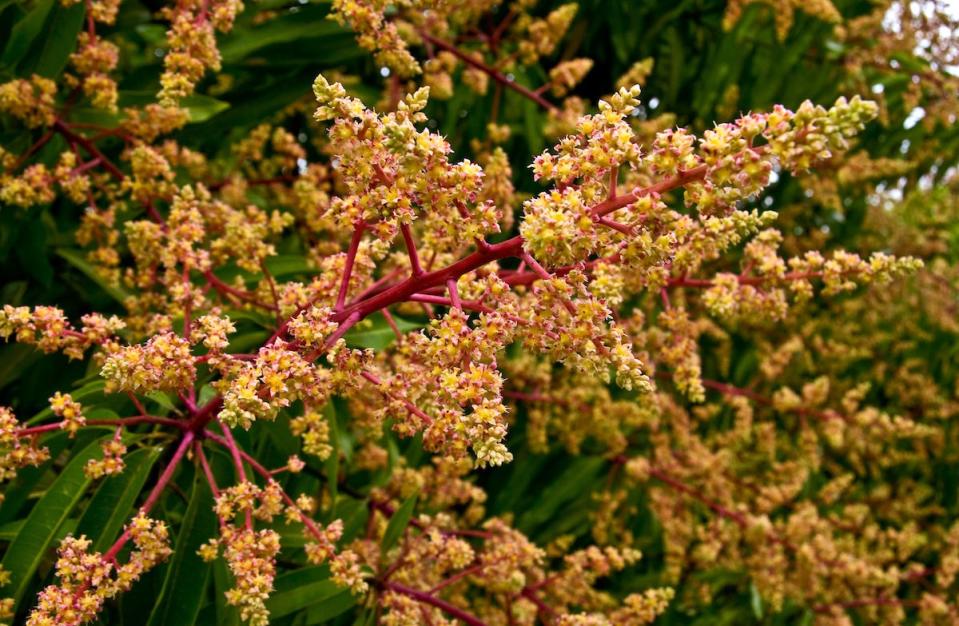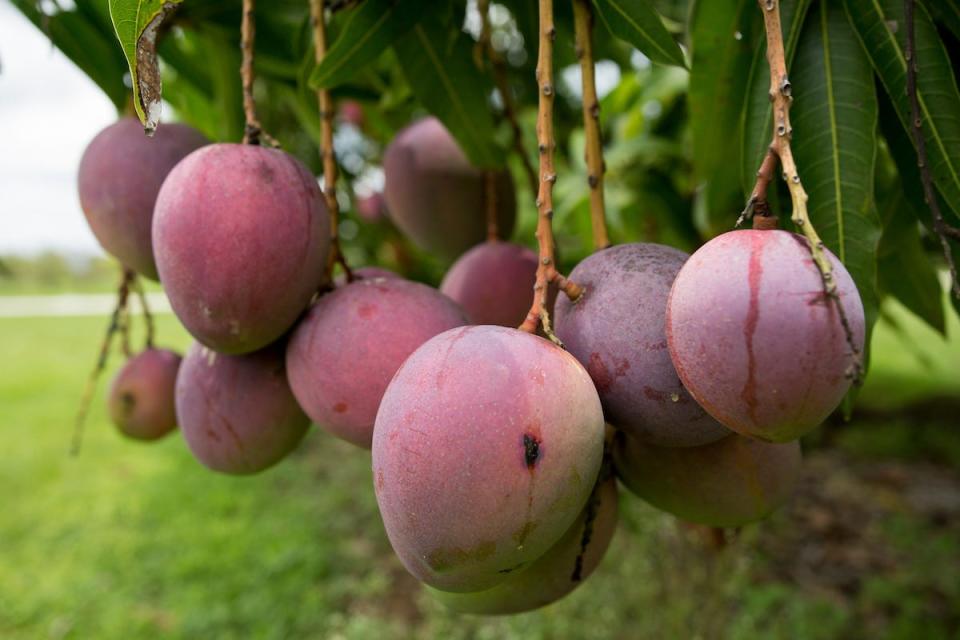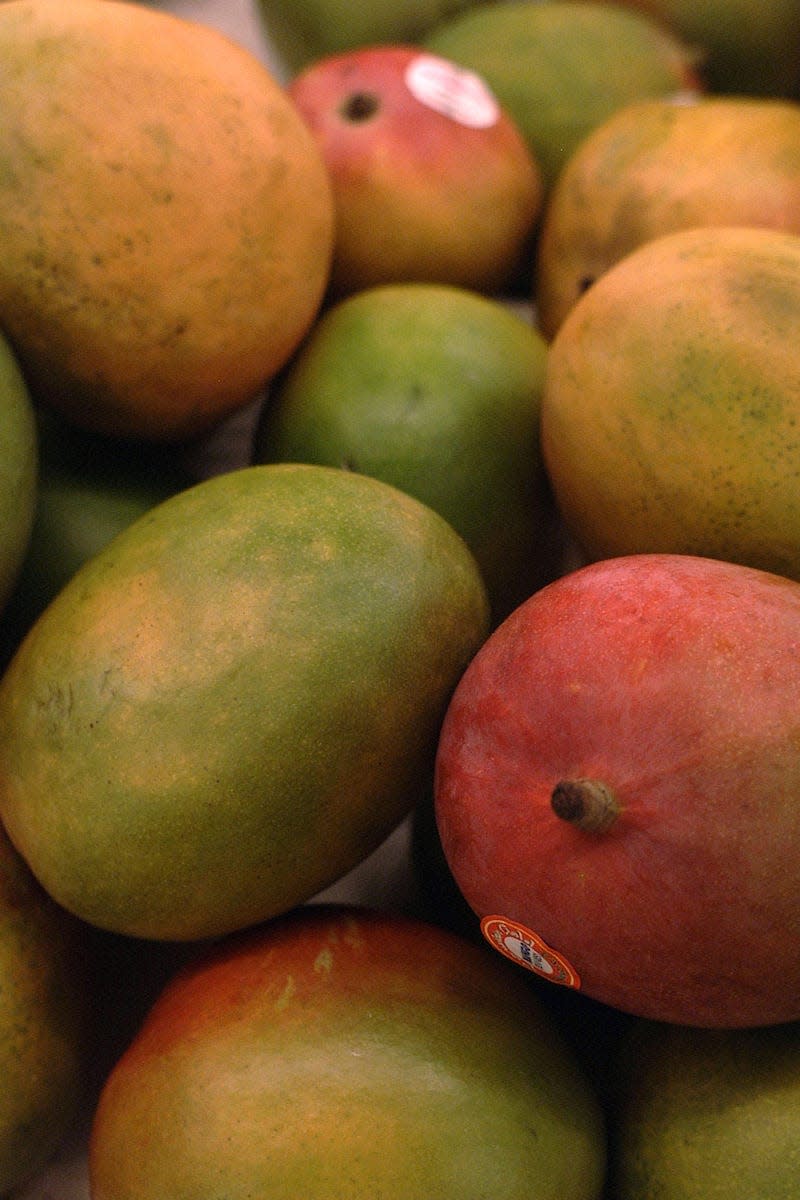Mango season is taking shape with tropical flavor in South Florida
Mango season is here. Mango trees on home landscapes and orchards in South Florida are working their way through the fruiting stage, making it prime time as the tiny flowers have begun to reveal tiny fruit.
The 2023 mango season erupted with an abundance of fruit last year. Will that be the case for 2024? What can researchers tell mango devotees as the early signs of fruiting begin to show?
It is a busy time for two experts at the University of Florida Institute of Food and Agricultural Sciences (UF/IFAS) in Homestead as they begin to see what orchards and home landscapes are revealing in South Florida.

Meet Jeff Wasielewski, a commercial tropical fruit crops agent at UF/IFAS Extension Miami-Dade County, and Jonathan Crane, a UF/IFAS professor, tropical fruit crop specialist and associate center director at UF/IFAS Tropical Research and Education Center (TREC). Together they are taking questions from consumers and growers, visiting orchards, hosting workshops and conducting research on Florida’s more than 200 mango varieties.
Here is a peak at what they are seeing, what growers are saying and the latest research at the TREC labs that is keeping mangos in the minds of consumers from South Florida where the fruit is king.
Q: What are common questions you are receiving this year so far?
Jeff Wasielewski: General questions like, “What are these spots on my leaves?” These can be attributed to a fungus know as anthracnose that attacks flowers, young fruits, leaves and twigs. Another question, I often received is, “Why isn’t my tree fruiting?” There are many reasons a tree isn’t fruiting including too shaded, pruned too aggressively, over watered, over fertilized, heavy pest damage, or it’s just a bad year.
Q: Have any changes taken place since last year that might indicate a potential change in this year’s yields?
A: This year we had two big blooms, an early one and a late one during the season. Unfortunately, we had a lot of rain after each bloom and that knocked off blossoms and set the stage for anthracnose potentially killing off some of the young fruit. Things are not looking great as far as fruit set this year as they did last year. The good news is that we should still get some fruit this year, and we can certainly dream of a bumper crop for next year.
Q: What are growers saying about their orchards so far?

Jonathan Crane: In general, the mango fruit set is down this year and varies from slightly lower than last year to a good year to even a disastrous year. Some growers attribute their lack of yield to the weather during the bloom period, such as unseasonal rainfall and/or wind, others blame the intensity of pests and diseases attacking the bloom and flowers.
Q: Are there any new varieties that growers are trying out, and what are some interesting characteristics consumers can look out for at the supermarket?
A: There is a whole host of older unique varieties and new varieties being grown, with many of the new varieties selected in the private breeding program of Zill High Performance Plants. Most of these will be found through direct market outlets and online.

Q: What can we expect to see from Florida’s mango market?
A: A large diversity of Florida-grown mango varieties in specialty markets online and through direct marketing. Florida’s strength is growing unique, high quality, mango varieties that are not found in the major mango trade – these mango varieties are for mango afficionados who appreciate the different aromas, flavors, shapes, textures, and colors of mango.
Q: What research is taking place at TREC and why?
A: Very little is known about the metabolism involved in the aroma and flavor we all love about mangos. The storage characteristics of many varieties is unknown, and while few varieties have been consumer tested, the stages of plant growth such as when they flower, flush, go dormant and are harvested of many varieties is not well documented.
A team of UF scientists just completed a project investigating the metabolomics of mango aroma and flavor, postharvest handling, consumer evaluations and acceptance, and phenology (tree growth phases). All this was an effort to link the metabolomics, postharvest handling, consumer acceptance and phenology for future mango breeding and selection programs.
This article originally appeared on Tallahassee Democrat: Tropical flavors of mango season is taking shape in South Florida

